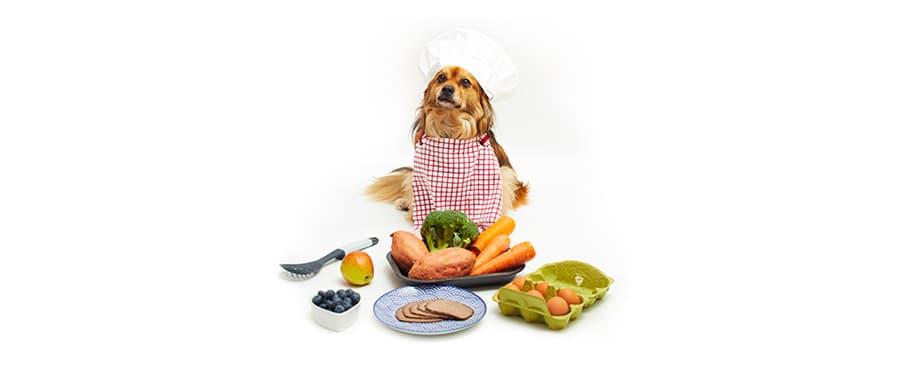
Sometimes simply buying store-bought dog food doesn’t really cut it. There are plenty of reasons why that happens, ranging from very good reasons to unfounded fears. However, if you decide to go down that route, you have to first inform yourself of the dangers and pitfalls of making dog food at home.
While buying “complete and balanced” dog food is the safer and in most cases a better option, this article is not meant to persuade or dissuade you from preparing your own dog food, but it will try to shed some light on the reality of dog food preparation.
Table of Contents
Reasons why people make homemade dog food
The best reason for making your own dog food is of course if the dog food that your dog requires, does not exist in stores. Occasionally the dog requires special diets, which would look contradictory or unnecessarily difficult to make in store-bought foods. For example, a diet for a dog with a deficiency in digestible enzymes (as little fiber as possible) and diabetes (high-fiber, low-fat diet).
Another reason is wanting to do something for your dog. Perhaps your dog is allergic to an ingredient, but you don’t know which? Elimination trial is the way to go.
Some people consider preparing food for their dog to be a type of bonding experience. Others, in an attempt to make food more natural, want the dog to eat what they eat; in forms of either table scraps or foods similar to theirs.
Then there is the growing group that tries to make vegetarian or vegan food for their dog (it is recommended that a veterinarian is consulted before making the switch).
And people who, due to misunderstanding the food label, wish to avoid “chemicals” in prepared dog foods. Commercial dog food additives and vitamins such as thiamin mononitrate (provides B1 Vitamin) or sodium selenite (provides sodium and selenite) are often misunderstood as unnecessary chemistry.
Before deciding to make your own dog food
- Consult a veterinarian.
- Get good recipes.
- Familiarize yourself with dog food preparation.
- Find a good source of ingredients and supplements (don’t swap recipe ingredients on your own).
- Get a food scale.
Dangers of making homemade dog food
- Getting the dietary requirements wrong. Dog diets and human diets are quite different. So feeding a dog with the human “low fat” diet doesn’t work.
- Getting the ratios wrong. Feeding the dog an all-meat diet might feel like a good idea, but they also need other nutrients. Refer to the table near the end of this article: http://pawsm.si/2019/09/25/guaranteed-analysis-the-perfect-dog-meal-and-what-does-pawsm-do-for-you/
- Getting bad recipes. Sometimes well-meaning fellow dog owners give less than good advice, and the internet is not to be believed. Get good recipes from nutritionists and trusted sources.
- Not following the recipes. Sometimes cooking the meat with or without the bone makes a difference in the end result. Using substitute ingredients, or ignoring supplements can and most likely will result in a significantly different end result.
- Accidentally adding contaminants. Commercially prepared dog foods can sometimes be contaminated (but there are checks in place). The ingredients you use are no exception – use trusted sources of food (avoiding pesticides, herbicides, meat from medicated animals, etc.).
A good recipe and preparation guideline (for a regular diet)
- A good recipe requires a good balance of food groups (carbs/fiber from cooked cereal, protein source, fat source, minerals, vitamin).
- Protein: 15-30 %
Fats: 5+ %
Carbohydrates: 40-50 %
Fiber: under 5 %
Calcium: 0,5-0,8 %
Potassium: 0,6 %
(Calcium: Phosphorus): 1:1 / 2:1 - Cooked vegetables and fruits are easier to digest.
- Washing grains before cooking is recommended (pesticides).
- Cook carbs and meats (protein) separately as protein coagulate at lower temperatures and are thus less digestible.
- Use vitamin and mineral supplements.
Pawsm treat for every pupper
- Caloric value: 30 kcal
- Fat: 0,90g
- Carbohydrates: 3,80g
- Protein: 1,4g